Trees Birds Mammals Fish Amphibians Reptiles
Wild Algarve
Bookshop
Naucoria scolecina (Fr.) Quel. - Cinnamon Aldercap
Phylum: Basidiomycota - Class: Agaricomycetes - Order: Agaricales - Family: strophariaceae
Distribution - Taxonomic History - Etymology - Identification - Culinary Notes - Reference Sources
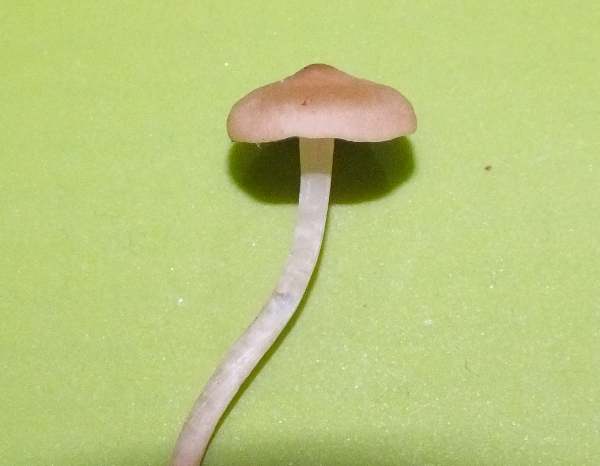
Mushrooms of the genus Naucoria are sometimes referred to as Aldercaps, because many (but not all) of them grow under alder trees, usually in boggy places known as carr woodland. I have placed this species in the family Strophariaceae, but some authorities record it with various known-to-be-hallucinogenic species in the family Hymenogastraceae.
Distribution
Rarely found in Ireland, in Britain this undistinguished mushroom occurs in Scotland, England and Wales but it is recorded only infrequently; that may be, in part at least, because few people feel inclined to spend time trying to identify little brown mushrooms (LBMs).
Naucoria scolecina can be found also in many European countries including Norway, Sweden, Denmark, Germany, Holland, France and Spain.
Taxonomic history
The basionym (unique specific epithet that had not already been applied to another species) dates from 1838, when the great Swedish mycologist Elias Magnus Fries described this little mushroom scientifically and gave it the binomial name Agaricus scolecinus. In 1875 the French mycologist Lucien Quélet transferred this species to the genus Naucoria, establishing its currently-accepted scientific name naucoria scolecina.
Synonyms of Naucoria scolecina include Agaricus scolecinus Fr., Alnicola badia Kühner, Naucoria phaea Kühner & Maire, and Alnicola scolecina (Fr.) Romagn.
Etymology
Naucoria, the genus name, comes from the Latin word Naucum meaning something slight or trivial. The specific epithet scolecina refers to the worm-like cheilocystidia on the gill edges of this mushroom. ('Scolecina' is a group of annelids typified by earthworms, ragworms etc.)
Identification Guide
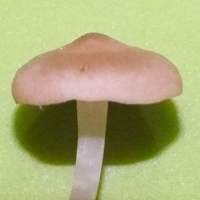 |
Cap
0.5 - 3.5cm across, convex becoming flattish but slightly umbonate; reddish brown, smooth at centre; finely velvety towards the margin; faintly striate when wet; hygrophanous. |
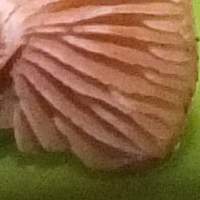 |
Gills
Emarginate; moderately crowded; brown, becoming red-brown at maturity.
Stem
Cylindrical, 2 to 8cm tall and 2 to 5mm diameter; yellowish brown to orange brown sometimes with scattered white fibrils on the upper stem, becoming darker brown towards the base. |
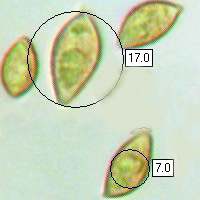 |
Spores
Fusiform with finely roughened surface, 8-15 x 5-7μm.
Spore print
Rusty brown. |
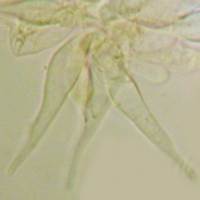 |
Cheilocystidia
Urticoid/bottle-shaped, with a narrow and tapering apical neck, sometimes slightly capitate, 30-60 x 8-15μm.
|
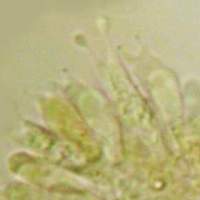 |
Basidia
Cylindrical; mostly or solely 2-spored..
|
Odour/taste |
Not distinctive. |
Habitat & Ecological role |
Mycorrhizal, in marshy alder (Alnus species) carr. |
Season |
July to November in Britain and Ireland. |
Similar species |
Several other Naucoria species occur with alders, and microscopic study is necessary to identify them with any degree of certainty. |
Culinary Notes
Together with other fungi in the genus Naucoria, this tiny toadstool has no culinary value.
Reference Sources
Fascinated by Fungi, 2nd Edition, Pat O'Reilly 2016, reprinted by Coch-y-bonddu Books in 2022.
Marriott, J.V.R. (1992). Keys to Naucoria species of damp ground. Keys Newsletter 8, 1.1- 1.20.
Moreau, P.-A. (2005). A nomenclatural revision of the genus Alnicola (Cortinariaceae). Fungal Diversity 20:121-155
Reid, D.A., (1984) A revision of the British species of Naucoria sensu lato. in Trans. British Mycological Society 82(2): 191-237.
BMS List of English Names for Fungi
Dictionary of the Fungi; Paul M. Kirk, Paul F. Cannon, David W. Minter and J. A. Stalpers; CABI, 2008
Taxonomic history and synonym information on these pages is drawn from many sources but in particular from the British Mycological Society's GB Checklist of Fungi.
Top of page...
Fascinated by Fungi. Back by popular demand, Pat O'Reilly's best-selling 450-page hardback book is available now. The latest second edition was republished with a sparkling new cover design in September 2022 by Coch-y-Bonddu Books. Full details and copies are available from the publisher's online bookshop...